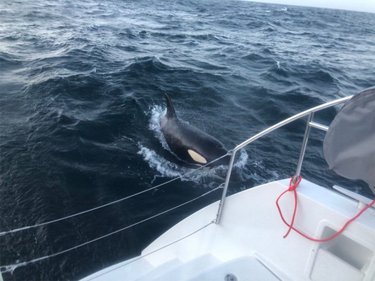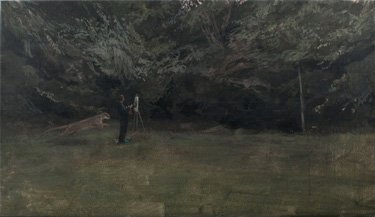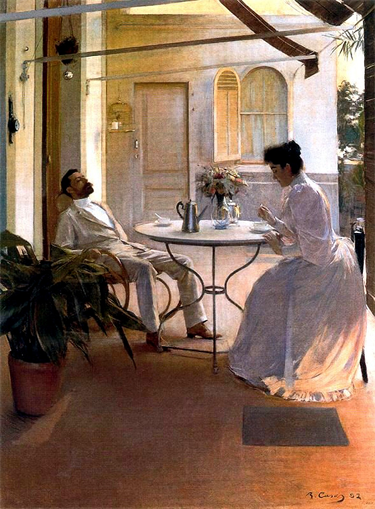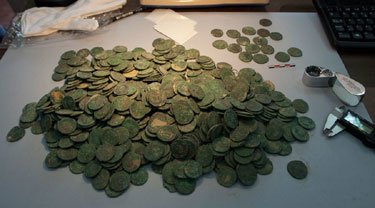Category Archive 'Spain'
16 Nov 2020


The BBC reports on at least 40 incidents of killer whales attacking boats off the coasts of Spain and Portugal.
[There have been] at least 40 similar incidents in the area. During the summer of 2020, the strangest of summers for so many of us, a group of killer whales off the coast of Spain and Portugal began to act very strangely indeed.
Accounts of the incidents suggested that the animals were deliberately targeting sailing boats. As David puts it: “They came to us, not the other way around.â€
The first reported incident was back in July, the most recent at the end of October.
Behind international headlines about “rogue killer whalesâ€, “orchestrated†orca attacks and the videos shared thousands of times on social media, there is a forensic marine science investigation that is still trying to work out what is driving these complex, intelligent and highly social marine mammals to behave in this way. …
In July, a sailing vessel had to be towed back to shore after a group of orcas repeatedly hit and damaged its rudder.
In August, a French-flagged vessel radioed the coastguard to say it was “under attack†from killer whales.
Later that same day, a Spanish naval yacht, Mirfak, lost part of its rudder after an encounter with orcas. A video of that incident showed the crew trying to outrun the animals, which appeared to pursue the boat.
In September, a man sailing his boat home to Scotland from Spain suddenly had the wheel spun out of his hands. A killer whale broke the surface at the side of the boat and he says that for 45 minutes, the animals bashed and chewed at the rudder, spinning the boat around.
“It’s getting worse and worse,†says Dr Renaud de Stephanis, another biologist involved in the investigation.
RTWT
HT: Bird Dog.
09 Oct 2020

Daniel in the lions’ den, Church of San Pedro de la Nave, Zamora Spain.
Wikipedia says:
The traditional interpretation is that the church foundation goes back to the reign of Egica in the seventh century, having been built between 680 and before the Muslim conquest of Hispania in 711; San Pedro de la Nave would thus be one of the last works of Visigothic architecture. However, the most recent archaeological studies have proven it to be not Visigothic, but Mozarabic (so, 9th century or 10th century in date).
Mozarabic or Vizigothic, it’s still Pre-Romanesque and very, very, cool.
37 photos here.
08 Aug 2019

Pere Llobera (Spanish, b. 1970), The puma attacking the plein-air artist, 2012.
28 Apr 2019

Ramon Casas i Carbó, “Interior al aire libre (Outdoor interior), 1892, La Colección Carmen Thyssen-Bornemisza, Madrid.
12 Dec 2018


Boy, would these stories trigger the snowflakes of color on any major college campus these days! Listverse:
Although nearly all of the conquistadors were men, there were a few women who participated in the conquests. Maria de Estrada, who was nicknamed the “Great Lady,†was probably the first white woman to set foot in the Americas. Estrada and her husband, Pedro Sanchez Farfan, spent time in Hispaniola and Cuba before investing and enlisting in Hernan Cortes’s expedition to Mexico in 1519.
Estrada was a full-fledged soldier, unwilling to receive special treatment because she was a woman. She participated in every battle and is believed to have been quite skilled with the sword. Her greatest moment was considered to be her fighting in La Noche Triste (“The Night of Sadnessâ€), the conquistadors’ disastrous retreat from the Aztec capital on June 30, 1520. After the conquest of the Aztecs in 1521, Cortes rewarded Estrada for her brave service with two towns in Morelos.
RTWT
11 Apr 2018


———————————-

Rock Crystal Dagger, 3000 B.C., Spain.
Daily Grail:
Structure 10.042-10.049 is another large two-chambered megalithic construction made from slate slabs. In the second chamber archaeologists found the body of a young male aged between 17 and 25 lying in the foetal position along with a large set of grave goods. These included an undecorated elephant tusk laid above the young man’s head, a set of 23 flint blades, and numerous ivory objects. Additionally, red pigment made from cinnabar had been sprayed over the body and the objects surrounding it. The “remarkable crystal dagger bladeâ€, however, was not found with these grave goods, but instead in the upper level of this chamber.
The rock crystal dagger blade appeared in the upper level of Structure 10.049 of the PP4-Montelirio sector, in association with an ivory hilt and sheath, which renders it an exceptional object in Late Prehistoric Europe… The blade is 214 mm in length, a maximum of 59 mm in width and 13 mm thick. Its morphology is not unheard of in the Iberian Peninsula, although all the samples recorded thus far were made from flint and not rock crystal…
The manufacture of the rock crystal dagger blade must have been based on an accumulation of transmitted empirical knowledge and skill taken from the production of flint dagger blades as well from know-how of rock-crystal smaller foliaceous bifacial objects, such as Ontiveros and Montelirio arrowheads… It was obtained from a large monocrystal at least 220 mm in length and 60 mm in width. Given that these single crystals are hexagonal, they would have a similar width along all their different axes.
The rock crystal source used in creating the crystal weaponry has not been pinpointed exactly at this stage, though analysis suggests two potential sources, “both located several hundred km away from Valencinaâ€.
Given the technical skill and difficulties involved in creating the objects from crystal, rather than flint, researchers believe the motives behind their construction must have been very specific. They note that while crystal objects were found throughout the site…
The more technically sophisticated items, however, were deposited in the larger megalithic structures…As such, it is reasonable to assume that although the raw material was relatively available throughout the community…only the kin groups, factions or individuals who were buried in megaliths were able to afford the added value that allowed the production of sophisticated objects such as arrow heads or dagger blades.
In this respect, however, it is important to note that, paradoxically, none of the most sophisticated artefacts studied in this paper can be ascribed to any particular individual: the rock crystal dagger from Structure 10.042-10.049 was found in the upper level of the main chamber (10.049) in which no human bones were identified; in Montelirio, neither the core nor the arrowheads can be ascribed to any on 20 individuals found in the main chamber; lastly, in the case of Ontiveros, the only available publication offers no evidence that the 16 arrow heads were associated to any particular individual.
It seems therefore reasonable to suggest that rock crystal may have had a dual significance for the Chalcolithic society of Valencina. On the one hand, it had a social significance due to the exoticism of the material and the fact that its transformation required very specific skills and probably some degree of technical specialisation. These objects would have had a “surplus value†based on the exoticism and rarity of the raw material, the techno-economic investment of their manufacture (a know-how limited to very few people) and their use linked to the world of beliefs and funerary practices. They probably represent funerary paraphernalia only accessible to the elite of this time-period.
On the other hand, rock crystal must have had a symbolic significance as a raw material invested with special meanings and connotations. The literature provides examples of societies in which rock crystal and quartz as raw materials symbolise vitality, magical powers and a connection with ancestors In her analysis of European Neolithic religion, Marija Gimbutas linked the ritual and votive use of white quartz nodules to a symbol of death and regeneration often associated with funerary spaces. Quartz and rock crystal were even portrayed as rocks with great supernatural powers in European Christian tradition. In his Lapidarium, King Alfonso X the Wise of Castile (1276-1279 CE) emphasised its power to connect human beings with the spiritual world, as well as its ability to protect them from danger.
15 Feb 2018


The Spruce:
There are many myths and mysteries surrounding the ritual of making queimada, the “fire drink†of Galicia, which is thought to have originated in ancient times when Celts established villages and settled in the region of Galicia. … This is the perfect specialty drink for an outdoor Halloween or winter party.
For the preparation of this drink, you will need a large fireproof clay pot or bowl, sealed or glazed on the interior and a very long-handled wooden spoon to stir the queimada. Sets of clay pots and glasses made specifically for this purpose are available through grocery stores and websites specializing in Spanish food.
What You’ll Need:
1 liter orujo (substitute Italian grappa if orujo not available)
2/3 cup granulated sugar
Rind of one lemon cut into strips
Scant 1/4 cup whole coffee beans
How to Make It:
Place the clay pot or bowl on a fireproof table of atop a cold BBQ grill. Be sure to have a large lid handy to put out the flames.
Pour approximately 4 tablespoons orujo and 1 tablespoon sugar into a small glass and stir to dissolve sugar, then set aside.
Pour the rest of the orujo and remaining sugar into the clay bowl and stir. Add the lemon peel and coffee beans and stir again.
Pour the orujo and sugar mixture from the glass into a ladle and light it on fire. Carefully move the ladle very close to the clay pot until the orujo mixture in the pot catches fire. Stir frequently until the flames turn blue. Slide the lid over the pot to put out the flames. Serve hot.
BBC Gallery
23 Jul 2017


Melania Capitán
You have to go down five Google pages to find an objective account, not sensationalistically identifying the young lady’s death as a fearful response to threats from animal activists or as an expression of guilt for hunting.
You-Blog Club:
A hunter and well-known Spanish blogger died in an apparent suicide this week, amid claims she was the target of online abuse from animal rights activists.
Melania Capitan, 27, was found dead at a farm in Huesca on Wednesday, the Guardia Civil said. She reportedly shot herself with a rifle, and left a suicide note, el Mundo reports.
Capitan was known for sharing her hunting lifestyle with her 36,000 Facebook and 8,700 Instagram followers.
She was a passionate hunter, and defended her actions online, posting pictures to Instagram of her posing with guns beside dead deer. Her controversial lifestyle reportedly garnered abuse and threats from animal rights activists.
Since her death, a number of people have posted cruel comments on her Facebook page, with one saying she “thankfully she killed herself, the only good thing she’s done lately.â€
El Mundo quotes a close friend of Capitan’s saying she died by suicide, and that it was not related to the threats she received online. “For personal problems, not for the insults she received in social networks,†the unnamed friend is cited as saying.
“It is a lie that has been said that she committed suicide because of the threats because she was a very brave woman, very strong, a fighter,†she said, adding, “in all social networks, people have done a lot of harm to her and they continue to do so. Take action on this, this should be punished.â€
——————————-
Roy Tingle for the Dail Mail typically milks the threats from Animal Rights Activists angle.
A female hunter has been found dead after apparently committing suicide weeks after she was reportedly threatened on social media by animal rights activists.
Melania Capitan, 27, was a well-known blogger and hunter with thousands of online followers.
She rose to fame due to her posts in which she explained hunting tactics as well as showing glimpses into her every day life.
Hunting magazine Jara y Sedal reported Melania, who was from Catalonia and had lived for the last three years in Huesca, had apparently killed herself.
She had also reportedly left a suicide note addressed to her friends.
This comes after it was reported that the internet star was threatened online.
Her posts caused much controversy across the internet, especially with animal rights activists who widely criticised her.
RTWT
24 Apr 2017

Luis Jiménez y Aranda, Los bibliófilos, 1880
08 Mar 2017


At Return of Kings, Spanish blogger Juan Sanchez Villalobos reports that Catholic slogans on a Madrid bus responding to a leftist transgender propaganda meme quickly provoked official and unofficial hostility.
A bright orange bus appeared in public on Monday in the city of Madrid with several phrases written on its sides stating blatant biological facts: “Boys have a penis, girls have a vagina. Don’t let them fool you. If you are born a man, you are a man. If you are a woman, you’ll keep being oneâ€.
The vehicle was commissioned by a Catholic organization called Hazte Oir (Make Yourself Heard), which has campaigned against abortion in the past. The bus is allegedly a response to a campaign displayed across northern Spain by a Basque organization which exhibited drawings of nude children holding hands and stating that some boys have vulvas and some girls penises. Their campaign was funded by an anonymous donor from New York who’s goal was to “raise social awareness about transgender children.â€
It didn’t take long for the government officials to spring into action. Madrid’s City Council, which is ruled by liberals, promised to take the “necessary measures†to stop the bus from touring the city saying the vehicle did not comply with local traffic ordinances. The regional government, ruled by cuckservatives, said that it was consulting with the Attorney General over whether the bus broke any “hate crime†laws. The cities of Barcelona and Valencia, both with progressive governments, announced penalties up to 3,000 Euros if the bus dares to come to their cities.
At any case their complaints have been successful and the bus was impounded by the police and taken off the road. The judge said the bus would remain immobilized until the slogans were removed, adding that the messages went beyond simply advertising the group’s ideology and attacked the dignity of certain people by denying their sexual orientation.
The orange bus has also sparked a furious backlash and hundreds of threats on Twitter by SJWs. “Less tweets and more burning and stoning the bus.†They incite him to burn it, paint it, throw eggs or use artifacts like a a bazooka to destroy it.
Read the whole thing.
29 Apr 2016


RT News:
Construction workers repairing water pipes in Seville, southern Spain, have discovered 600kg of ancient Roman coins, covered with dirt and dust. The find is said to be worth at least “several million euros.â€
Tens of thousands of bronze coins, dating back to the third and fourth centuries, were found inside 19 Roman amphoras in the town of Tomares near Seville, El Pais reported.
“This find is extremely important,†Ana Navarro, head of Seville’s Archeology Museum now looking after the find, told El Pais. “It is a unique collection, and there are very few similar cases,†she added.
The discovery of the jars full of coins happened on Wednesday during construction work about 10 kilometers from Seville.
“Those are not amphoras meant to store wine or oil. They are smaller and were used to transport other goods. Surprisingly [they were] used to save money,” Navarro told the newspaper.
AFP quoted Navarro as saying the coins, stamped with inscriptions of Emperors Maximian and Constantine on the reverse side, are worth “several million euros.â€
“I could not give you an monetary value, because the value they really have is historical and you can’t calculate that.â€
Although most coins are bronze, archaeologists say some appear to be silver-plated. “Most show little evidence of wear, which means they were not in circulation,” Navarro explained.
“It is surprising to have found 19 jars filled with coins. Out hypothesis is that the money was used to pay imperial taxes or paying the army,†Navarro told the newspaper, adding that the amphoras were probably hidden “because of social conflicts, violence [and other] threats.â€
Local authorities have suspended work on the water pipes to carry out archaeological excavations at the site.
26 Dec 2013


The Sanctuary of the Virgin of the Boat in Muxia, Galicia, one of the most important stops on the Pilgrimage to the Shrine of St. James of Campostella was destroyed yesterday, Christmas Day, by a fire which attacked the ancient church, built in the 12th century on the site of a previous Celtic pagan shrine, after lightning struck a transformer.
The fire raged for two hours, destroying in the process the original ceiling and main altar, and seriously damaging the dome, now in danger of collapse.
The region late remained pagan, and legend has it that St. James despaired of being able to convert the native population of Finisterre from their cult of worshipping the sun. The apostle came to the cove at Muxia to rest, whereupon a vision of the Virgin Mary “full of mystery and majesty” on a boat appeared to him, assuring him that his mission would be successful. Celtic stones were later interpreted as the petrified remains of the Virgin’s boat.
ABC News story
Il Messagero (Italian)
.
/div>

Feeds
|
















